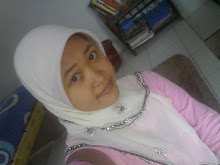By the end of the
nineteenth century – It seemed that everything looked good at the time, and some still remain cogent
today- the eqution of the languags with biology had largely been abandoned.
This created a difficulty of understanding the languag e as an academic
discipline: If the language is not the living species, in what sense are they “thing” can be studied? The man
n the street is quite happily that French as something which can be learned,
which possesses certain attributes and in some cases, it is same or similar to
English but in other cases, it is different; but if French is a thing , it is a very odd thing. It
obviously is not a concrete object like table or even like the strecth of land
called France. You can not see or hear the French language. You can hear Gaston
the waiter saying "pas si bete ...": you can see a line of printed
letters on a sheet of newspaper "Le Monde"; but how can we interpret
a thing called French lying behind the thousands of concrete phenomena which
can be observed as in the two earlier examples? What sort of language could it
be? The biological paradigm shows the relationship between the speech and
language of France such as a particular carrot and the species carrot as well : and untill the biological
paradigm had been rejected, this statement seemed satisfying - although one
could see or eat carrots, one appreciated that it made sense to talk about the
species carrot and to discuss, say, its genetic relationship with the species
parnsip. But, the first time, the biology had fallen by the wayside; secondly, one
had thought about that paradigm can not offer a complete answer to the problem under discussion
anyway. In biology, because species are abstractions, at least individuals of
species are concrete, few things are more tangible than a carrot. But the
linguistic analogue of biological is a idiolect; and this is almost, if not
fully, as much of an abtraction as in the wider concept of language. We can not
hear Gaston’s idiolect as an entity; we
can only hear examples of that idiolect – the comments which he said if he saw
a tip that we left, and the example of that idiolect has no parallel in biology.
So although it is not regarded as a particular problem by linguists of the
nineteenth century, the question "How does it make sense to postulate
entities called language or dialect underlying the tangible reality of particular
utterances? Remained open during that period. The man who answered it that can satisfy
his contemporaries and continues to satisfy many people today, was the Swiss
scholar : Ferdinand de Saussure.
Mongin
Ferdinand de Saussure, his full name, was born in Geneva in 1857, son of
Huguenot family which moved from Lorraine during the French religious wars of
the late sixteenth century. Although nowdays one thinks of Saussure first and
foremost as the scholar who defined the notion synchronic linguistics – the
study of language as systems existing at a given point in time, as opposed to
the historical linguistics (to distinguish it, Saussure called diachronic
linguistics)which had seemed to his contemporaries the only possible approach
to the subject - in his own lifetime this was not meant to make him famous. Saussure was trained as an ancient linguists, and became successful
in the early age published a book Memoire sur lesysteme primitif des voyelles dans les
langues indo-europeennes (1878). The book was published a few weeks after his
twenty-first birthday : When he was a student in Germany. The book is one of the
landmark in reconstruction of Proto-Indo-European language. Saussure letured at
the Ecole Pratique des Hautes in Paris from 1881 to 1891, before he returned to
teach in Geneva, all of his publications, and almost his teaching, throughout
his work with historical linguistics rather than synchronic linguistics, with
in-depth analysis of the various Indo-European languages rather than with the
general theory which makes it famous now.
In fact, although Saussure produce his work on the theory of general
linguistics at about 1890 (Koerner, 1973: 29), he seemed reluctant to give it
to someone else, and the story of how his ideas can go into publishing is a
strange story. In late 1906 he was asked to take over responsibility in giving
lectures on general linguistics and comparative history and languages of the
Indo-European from a scholar who has quit his service for 30 years; Saussure
taught the material on the rest of her student days and on the lectures in
1908-1909 and in 1910-1911. In the first years , Saussure limit at only about
historical matters ; but when he gave the two years he was also a brief
introduction to post a synchronic linguistics , and the third lecture , the
entire semester is used to provide synchronous linguistic theory . Shortly
afterward he died , without a chance to publish any material that theory . Some
people have been asked to publish , but he always answered that for preparing
lecture materials very time-consuming , but two of his colleagues , Charles
Bally and Albert Sechehaye decided on a new fabric of the student lecture notes
together with notes Saussure left college . The book they produced is called
Cours de linguistique gererale ( Saussure 1916) is a medium that can be used by
scholars in the world to understand the ideas of Saussure , Saussure and since
this document is known as the father of twentieth -century linguist.


tulisannya bagus
BalasHapus